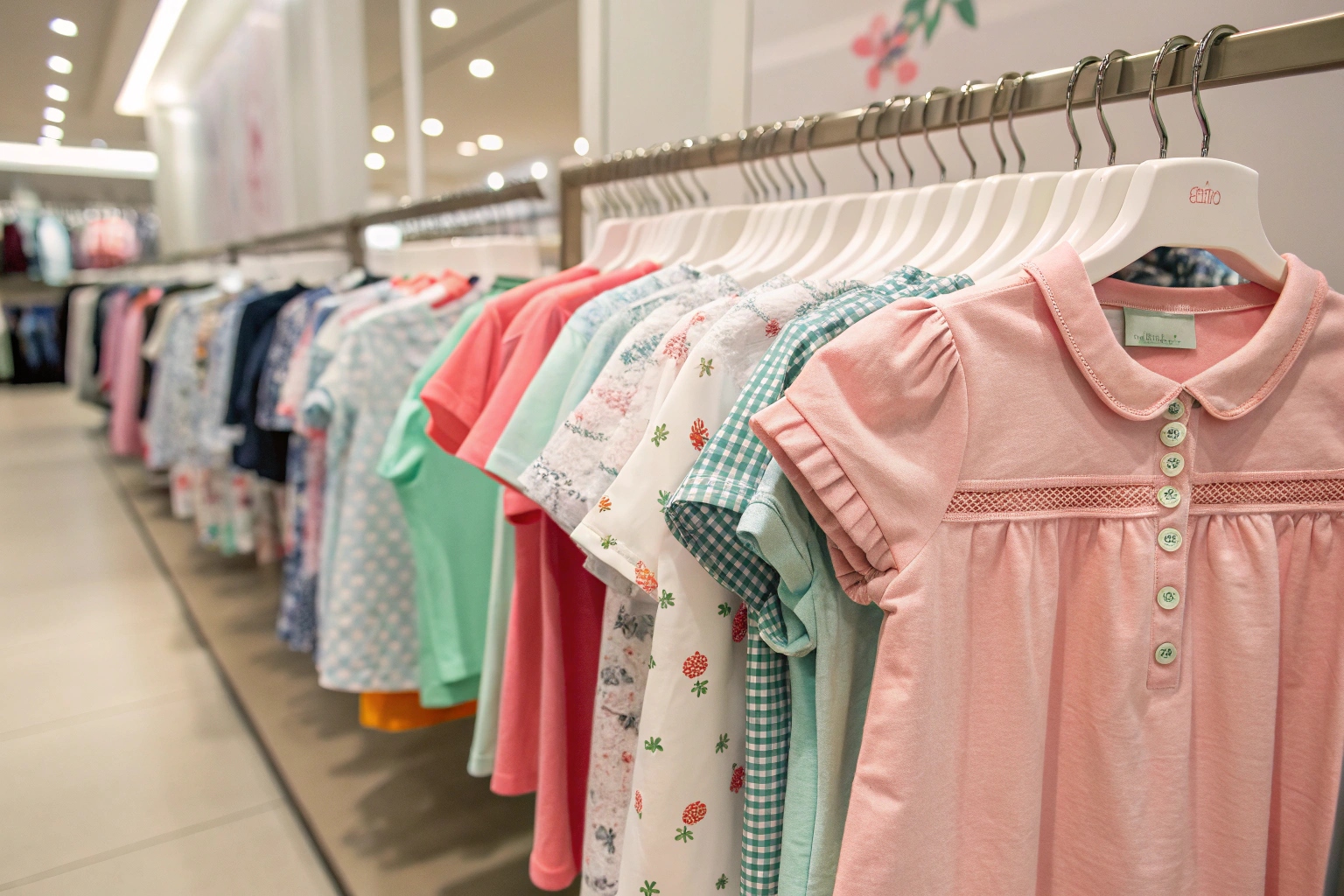Parents, buyers, and even kids often ask: why are so many girls' clothes designed to show more skin?
Most girls' dress shirts are super short sleeved because of fashion industry trends that prioritize style over function, often ignoring practicality and comfort.
Let’s dive into why this trend exists and what it means for parents, buyers, and manufacturers.
Why do girls wear super short dresses?
Many young girls’ dresses are designed to look like mini versions of adult outfits.
Girls wear super short dresses mainly because that’s what fashion designers and mass-market brands produce and promote, based on adult trends.
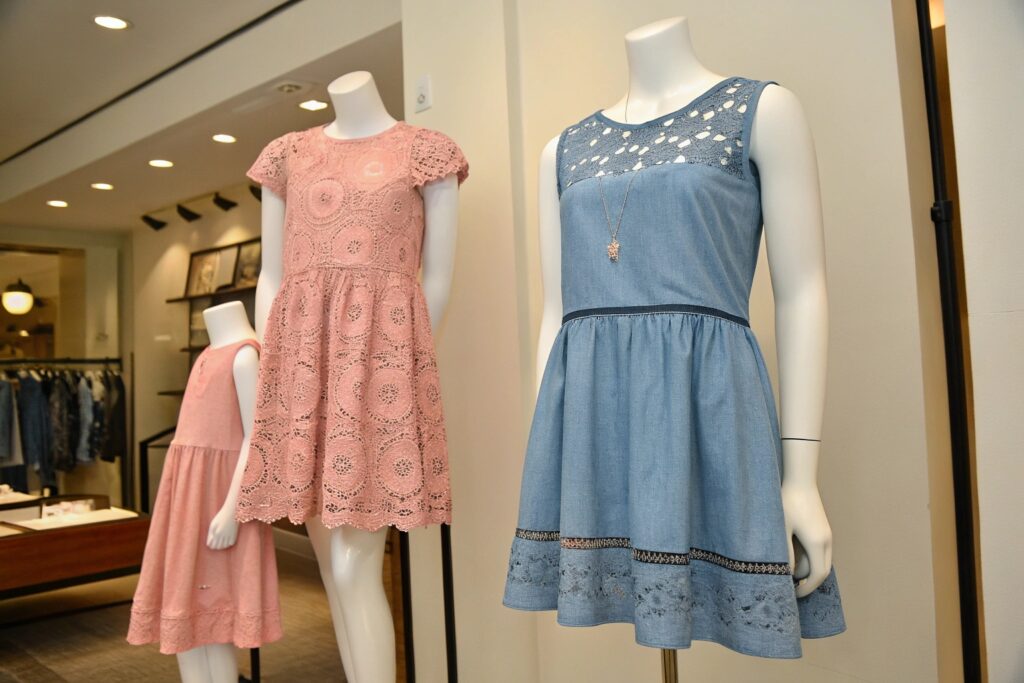
Why are children’s dress designs often copied from adult trends?
Designers frequently apply adult fashion templates to girls’ clothes, shrinking down silhouettes without considering real use cases. That means:
- Sleeveless designs that look “cute” but offer no warmth
- Short hems that are more decorative than functional
- Thin, stretchy materials that lack durability
From my factory floor, I’ve seen trend charts where girls’ designs are directly lifted from women’s fashion runways. This happens because speed-to-market often wins over child-focused thinking.
Also, brands assume parents buy based on visual appeal. So they showcase “cute” over comfort. But when I speak to actual buyers, they complain that these short dresses don’t suit school dress codes or daily wear.
Do cultural and seasonal influences affect girls' dress lengths?
Yes. In warmer climates or during summer, shorter dresses are more accepted. But in cooler regions or conservative communities, short styles become impractical or even controversial.
Here’s a quick breakdown:
| Region/Season | Preference | Issues with Short Dresses |
|---|---|---|
| Hot climates | Short dresses preferred | Risk of sunburn, lack of coverage |
| Cold climates | Longer sleeves/layers needed | Short dresses not weather-friendly |
| Conservative cultures | Modest clothing expected | Short styles clash with values |
| School environments | Uniform or dress code rules | Short hems often not allowed |
For wholesale buyers, it’s important to ask: is this style wearable, or just fashionable?
Why are women's shirts so low cut?
Some girls’ tops look like tiny versions of adult night-out wear. But why?
Women’s shirts are often low cut due to beauty standards and body-focused fashion trends that are copied into younger girls’ clothing.
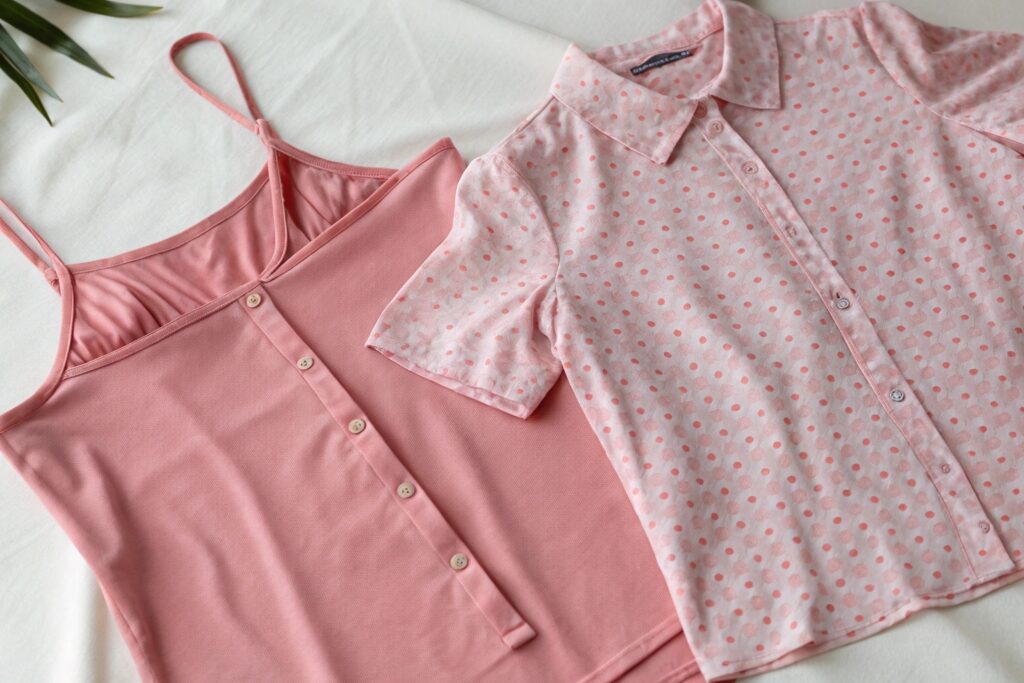
What drives the popularity of low-cut shirt designs?
The fashion industry often markets clothes around sensuality and body emphasis. This trickles down to younger age ranges in subtle ways—especially in teen and tween markets.
Designers chase trends like:
- Deep v-necks or scoop necks
- Off-the-shoulder cuts
- Cropped or cut-out panels
These designs are often praised in fashion shows, celebrity looks, and influencer content. But when these styles land in girls’ departments, they create confusion. Should children’s clothes highlight body curves? Obviously not—but some manufacturers still blur those lines.
As someone who’s sourced for major clients, I know many buyers struggle to find basic tees with full coverage for girls.
Are there functional reasons behind low-cut designs?
Rarely. Most of these styles have no temperature, comfort, or athletic benefit. Instead, they are meant to visually match older trends. Here’s a comparison:
| Purpose | High Neck Designs | Low-Cut Designs |
|---|---|---|
| Modesty | ✅ Strong | ❌ Weak |
| Warmth | ✅ Keeps body warm | ❌ Exposes chest/shoulders |
| Movement | ✅ Full coverage during play | ❌ May shift or slip |
| Aesthetics | ❌ Less fashionable | ✅ Trend-focused |
What we need is a return to common sense—designs that prioritize function, not fashion overreach.
Why do girls wear short tops?
Crop tops are everywhere. But are they appropriate for kids?
Girls wear short tops because modern fashion celebrates cropped looks, and retailers stock more short tops than full-length alternatives.
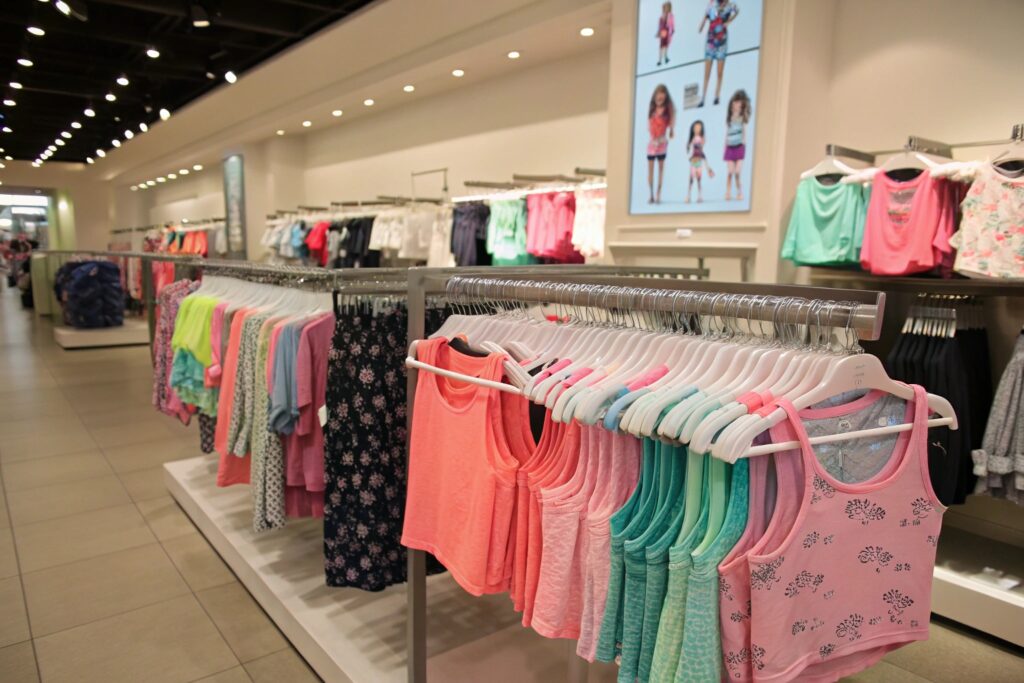
Why are crop tops so popular in girls’ sections?
The short top trend grew from adult styles—sports bras, festival wear, and activewear. Social media, pop culture, and celebrity endorsements have accelerated this.
Retail buyers tend to follow what’s trending, and short tops:
- Take less fabric (lower cost)
- Are easier to style in layered outfits
- Seem “cool” to older kids and teens
But these benefits don’t outweigh the issues for younger children. I’ve heard from schools and parents alike who request full-length alternatives but can’t find enough in stores.
How do parents feel about this trend?
Parents often feel stuck. Their daughters may request these trendy tops to “fit in,” but the clothing doesn’t meet school or comfort needs.
Here’s what I hear from buyers who run family-centered brands:
| Parent Concern | Impact |
|---|---|
| Short tops reveal midriff | Child may get cold or embarrassed |
| Not suitable for school | Conflicts with dress codes |
| Lacks layering options | Limited versatility |
| Pushes maturity early | Uncomfortable for some families |
As a supplier, I always recommend offering a balance: include stylish but modest tops—like longer-line tees with trendy prints—so buyers can meet both sides.
Why do some girls wear short or revealing clothes?
This is the big question that many don’t want to ask out loud.
Some girls wear short or revealing clothes due to peer influence, limited choices, and exposure to adult fashion ideals in media.
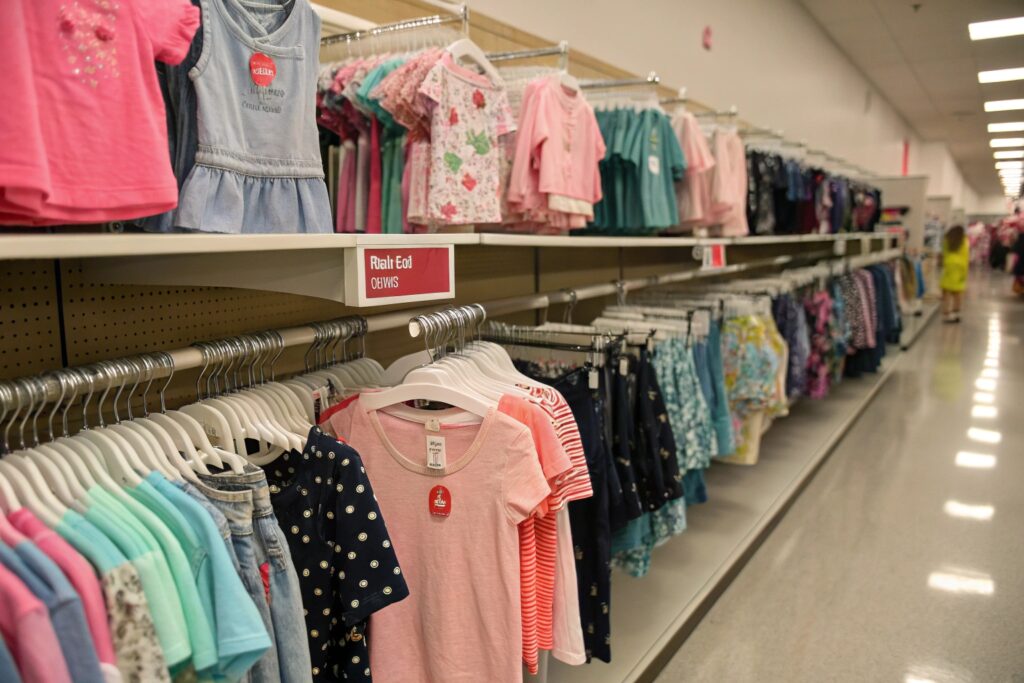
Is this about choice or availability?
A bit of both. Girls are surrounded by media that celebrates adult style. When shopping, they often find:
- Shorts with 2-inch inseams
- Backless or halter tops
- Leggings with sheer panels
When these are the main options, girls either wear them—or get left behind in fashion conversations at school.
I’ve seen this especially with Western brands trying to attract Gen Z and Gen Alpha buyers. Instead of adjusting the message to suit the age group, they shrink adult styles and put them on kid-sized mannequins.
Do girls actually want these styles?
Not always. From my research with buyers, kids usually want clothes that help them fit in—not necessarily that expose skin. It’s the retailers who misinterpret “trendy” as “revealing.”
Here’s a breakdown:
| Reason Girls Choose Revealing Clothes | What's Really Happening |
|---|---|
| Style preference | Influenced by peers/media |
| Peer pressure | Fear of being “out of style” |
| Limited options | Retailers offer few modest choices |
| Confidence expression | Learning identity, not sensuality |
As a father and manufacturer, I believe we need better designs that allow girls to express personality—without revealing too much. Think bold colors, layered textures, and creative graphics.
Conclusion
Girls’ clothing trends reflect adult fashion more than childhood needs. If we want change, we must design and sell clothing that supports confidence, comfort, and common sense.

